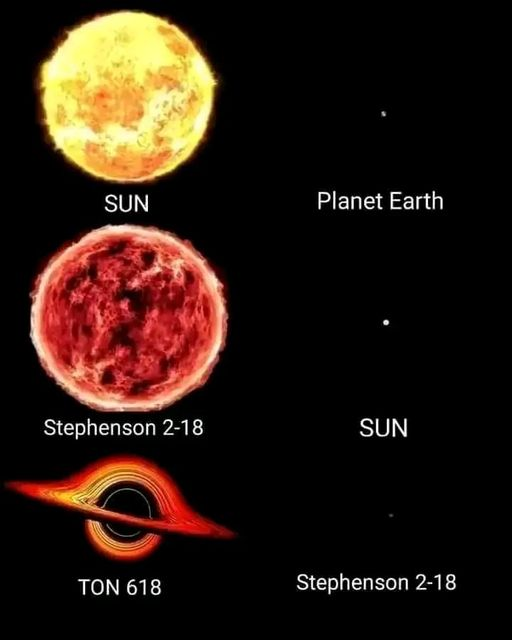#4 Op's mom
Science Memes
Welcome to c/science_memes @ Mander.xyz!
A place for majestic STEMLORD peacocking, as well as memes about the realities of working in a lab.

Rules
- Don't throw mud. Behave like an intellectual and remember the human.
- Keep it rooted (on topic).
- No spam.
- Infographics welcome, get schooled.
This is a science community. We use the Dawkins definition of meme.
Research Committee
Other Mander Communities
Science and Research
Biology and Life Sciences
- !abiogenesis@mander.xyz
- !animal-behavior@mander.xyz
- !anthropology@mander.xyz
- !arachnology@mander.xyz
- !balconygardening@slrpnk.net
- !biodiversity@mander.xyz
- !biology@mander.xyz
- !biophysics@mander.xyz
- !botany@mander.xyz
- !ecology@mander.xyz
- !entomology@mander.xyz
- !fermentation@mander.xyz
- !herpetology@mander.xyz
- !houseplants@mander.xyz
- !medicine@mander.xyz
- !microscopy@mander.xyz
- !mycology@mander.xyz
- !nudibranchs@mander.xyz
- !nutrition@mander.xyz
- !palaeoecology@mander.xyz
- !palaeontology@mander.xyz
- !photosynthesis@mander.xyz
- !plantid@mander.xyz
- !plants@mander.xyz
- !reptiles and amphibians@mander.xyz
Physical Sciences
- !astronomy@mander.xyz
- !chemistry@mander.xyz
- !earthscience@mander.xyz
- !geography@mander.xyz
- !geospatial@mander.xyz
- !nuclear@mander.xyz
- !physics@mander.xyz
- !quantum-computing@mander.xyz
- !spectroscopy@mander.xyz
Humanities and Social Sciences
Practical and Applied Sciences
- !exercise-and sports-science@mander.xyz
- !gardening@mander.xyz
- !self sufficiency@mander.xyz
- !soilscience@slrpnk.net
- !terrariums@mander.xyz
- !timelapse@mander.xyz
Memes
Miscellaneous
Astrophysicist here. Yes, space is crazy, but interesting things to keep in mind:
- The size of a star is determined by something called the photosphere. With those extremely massive stars, you can be hundreds of millions of kilometres "inside" and not yet know it.
- Similar story with supermassive black holes, from the perspective of an astronaut falling in, they wouldn't really be able to tell when they cross the horizon because the tidal forces there are very small (they will inevitably fall towards the centre and get spaghettified at some point)
Hi Astrophysics,
I always wondered why they draw black holes like they do in that the accretion looks like it's drawn in two planes. I would have thought it would have looked a bit more like a saturns rings? Or is it exactly like saturns rings but we see the whole ring bent round the top because a black hole bends the light around so we can see it? Or is it something else entirely that they are trying to depict here?
Black homes are so massive and heavy that they bend light (well, technically every piece of mass does, even yo momma). It's bend so extreme that that accretion disk appears warped.
A similar thing happens with neutron stars that can also bend light in such a way that you can actually see part of the back of the star (if you were able to see it anyway, it would be dark) as light that would be emitted from parts of the back would warp around to the front where you could see it
The second one. The image is simulated as how an external observer would see it. It was firstly done for the Interstellar movie.
The first simulated images were actually computed decades ago, but I think Interstellar had the most detailed simulation by a high margin
https://www.cnrs.fr/en/press/first-ever-image-black-hole-cnrs-researcher-had-simulated-it-early-1979
Interstellar spent 100 hours of mainframe compute time per frame to simulate a black hole
Yep, you got it right. The accretion disk is actually really flat. Those images are produced in simulations that take into account the curved (and very complex) paths light takes in the vicinity of a black hole. These images really depend on the angle between the line of sight and the disk.
as a non astrophysicist, or just a non astronomer in general. it weirds me out every time i remember that there is literally a part of the universe that apparently exists, of which we will never be able to see, because the light from that part of the universe, quite literally hasn't reached us yet.
The observable universe is inconceivably massive. But it just keeps going.
And to think it's not an improbable concept for humanity to recreate the physics behind a big bang in a controlled setting, somewhere down the line from here, is certainly an interesting thought.
the light hasn't reached is yet
The light will never reach us, space is expanding faster than light between here and there
what's crazier: you'd need many side by side monitors to show our solar system at this scale
https://www.joshworth.com/dev/pixelspace/pixelspace_solarsystem.html
